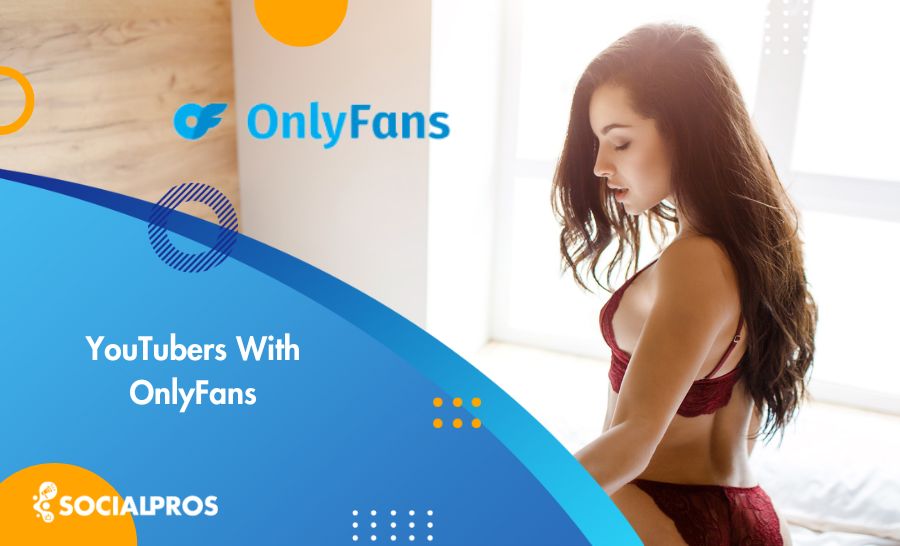Page Contents
If you have even the slightest information about businesses these days, then you must have noticed how successful brands make their website and social media work together. That’s because investing in social media marketing is one of the most effective strategies to secure impressive business growth.
But social media isn’t just a channel your business can utilize to boost reach and engagement. It’s even more than a platform for building long-lasting relationships with your clients and implementing social media advertising strategies. When done correctly, any social channel can be an extension of your website.
By making your website and social media work together, you can turn it into a high-value source of organic traffic that you can transform into conversions on-site. So, if you’re looking for tips on how to make your website and social media work together, here’s what to do to reach maximum conversions.
Get the Basics Right
The first step toward making your website and social media work together for your business is to go back to the basics of setting them up.
- Ensure that you choose social platforms that are a good fit for your business. Yes, Facebook may be the most popular network, with over 3 billion active monthly users. But the simple truth is that engaging young audiences will be much easier on YouTube, TikTok, and Instagram.
So, identify the social channels that will allow your brand to reach its audience. This will help you get the most out of your social media marketing strategy.
- Do your best to get the profile set-up process right. Don’t forget to add a website link to your bio. Make sure your social media visual identity aligns with what followers will see on your website. And be consistent about staying true to your brand’s voice when posting on socials.
For example, check out how well the Topdrawer Instagram page and website match. Both assets utilize the same visuals in the topmost sections of the page. But even more, the brand covers similar topics on its site and social media. This ensures a seamless experience when prospects move from one platform to the other.
Source: instagram.com
- Don’t underestimate the importance of adding social links to your website. Something as simple as including Facebook and Instagram follow buttons in the footer of your site can be a great way to encourage consumers in the early stages of the buyer’s journey to continue interacting with your brand.
This is particularly important for engaging consumers who are not yet ready to buy but are good candidates for becoming your brand’s customers down the road. You can see a great example of how a website and social media work together on the Transparent Labs Tongkat Ali product page.
What Statics Say About Social Media
Research shows that, in 2023, people spent more time than ever on social networks — 151 minutes per day, on average. If you look into the why behind their willingness to commit two and a half hours per day to scrolling and interacting with brands, you’ll find that:
- 68% of people interact with brands to stay informed about new products and services.
- 46% want to have access to exclusive deals and promotions.
- 45% think branded content is enjoyable and entertaining.
- 28% find value in interacting with brand communities. And;
- 21% appreciate the fact that brands’ values align with their own.
Use Social Listening to Enhance All Your Marketing Strategies
The beauty of social media marketing is that it gives you direct access to your most engaged audience. Seeing that it provides an unfiltered view of who’s invested in your business, it can be an effective tool for getting to know your ideal customers better.
Essentially, if you want to make your website and social media work together to increase your conversion, try treating it as a research platform.
Analyze Your Audience’s Wants
Employ social networks to get to know your audience better.
Ultimately, the best way to make your website appealing to future customers is to have a solid idea of who those customers are. And the best part is that most social networks include built-in analytics tools.
Using these, you can collect demographic data about the people who have engaged with your brand. Then, you can make any necessary adjustments on-site to ensure your messages appeal to the people you’re trying to convert.
But where social media stands out in terms of audience analysis is that it also allows you to employ social listening. By following and analyzing trends relevant to your brand and industry, you can learn about your followers’ interests, pain points, values, and priorities.
More importantly, you can use this information to optimize your website and product offer in a way that will reflect your target audience’s wants and encourage them to form an emotional investment in your business.
For example, through building its social media presence on consumer interactions, Converse found out its audience appreciates a blast from the past. So, the brand created a special edition of its retro Chuck 70 sneaker made with upcycled flannel.
The product perfectly reflected the brand’s audience’s tastes. It also attracted thousands of Instagram likes and led to impressive on-site sales numbers in less than a month.
Research Competitors
Another way to use social listening to make your website and social media work together is to research your rivals’ publishing activities.
After all, competitor research can be an excellent source of data and inspiration. And if you want to enhance your content creation efforts, you must utilize every opportunity to deliver unique value.
However, keeping tabs on conversations surrounding your competitors can also be a way for your business to capture new leads (or even convert new customers).
For example, check out Monday’s Twitter activity. Notice how the brand regularly engages users by asking for productivity app recommendations. More impressively, the company frequently interacts with competitor clients seeking support.
By presenting these (commonly dissatisfied) users with the benefits of switching over to its app, Monday manages to attract new users. That’s all thanks to having a social listening strategy in place.
Send High-Quality Traffic to Your Website
If you’re searching for the most effective tactic to make your website and social media work together for maximum conversions, start treating social networks as a source of high-quality site traffic.
The most straightforward way to do this will, naturally, be to maximize social reach and engagement. Provided you do these right, people will naturally want to check out more about your brand/products on your site.
However, in addition to focusing a lot of your attention on social media activities that might result in more people visiting your website (and converting), explore strategies that will help you intentionally direct followers to your site.
Treat Every Post as a Potential Source of Web Traffic
The easiest way to direct social followers to your site is to make it super-easy for them to continue brand interactions on your website.
On Instagram, add relevant links to your bio. Create a Linktree page to help followers choose what section of your site they wish to visit. Or, for the most natural way to inspire people to visit your brand’s site, add link stickers to your Stories. For example, check out below how Teak and Twine did it.
Source: instagram.com
If you create for YouTube, enrich descriptions with links to your site. You can even take things a step further and include description links to every specific product you mention. This strategy is particularly popular amongst influencers collaborating with brands or partaking in affiliate marketing.
Source: youtube.com
Use Social Media as a Content Distribution Channel
So, you’ve realized that you can make your website and social media work together to drive traffic to your site. Now it’s time to start treating social networks as an additional content distribution channel.
The easiest way to do this will be to employ automation tools to auto-publish blog posts on Twitter, Facebook, and LinkedIn. This is what brands like Attentive do, as it’s a zero-cost method to maximize post reach and drive website traffic.
But, of course, you can take things a step further.
Check out Evernote’s YouTube channel, where each of the brand’s blog posts is also produced in video format. And thanks to the high engagement rates video delivers (as well as YouTube’s popularity), this content distribution strategy works beautifully. It:
- allows the business to reach more customers with valuable content
- captures people’s attention thanks to the quality of the content
- directs viewers to Evernote’s website, where they can learn more about the discussed features and (hopefully) convert
Repurpose Long-Form Content Into Engaging Snippets
Another great way to make your website and social media work together is to use social networks as a place where you can repurpose long-form content into attention-grabbing snippets. This is especially valuable if you want to maximize organic traffic and inspire conversions.
In today’s day and age, short-form content works amazingly well. According to HubSpot’s 2023 Global Social Media Trends Report, 53% of marketers use short-form video due to its ROI potential. It’s attention-grabbing and snackable. And most importantly, short-form video is something you can make from already existing pieces of content you’ve produced.
For example, check out DJI’s YouTube channel. You’ll see that almost every video on the brand’s feed has a Shorts-counterpart. Furthermore, there are two ways the business can make its website and social media work together to boost website conversions for its new Osmo Pocket 3 gimbal camera:
- Each Shorts upload features a direct and clickable link to a long-form video. This is where consumers can learn more about products and follow a website link to the brand’s webshop.
- In the description section, you’ll see that it also includes direct website links to relevant product pages. This demonstrates how easy it can be to move prospects from the awareness to the decision stage of the sales funnel with a 60-second piece of content and a couple of well-placed links.
Source: youtube.com
Encourage Social Sharing on Your Site
As you work to employ social media as an additional distribution channel for your business, don’t underestimate your audience’s role in helping you reach new prospects and boost conversions.
People love to share content with their social media followers. Especially if it’s educational, entertaining, or emotional. So, if you can get their help spreading the word about your brand and products, you will inevitably attract more organic web traffic and improve your conversion rate.
There are two great ways you can employ your followers’ help in making your website and social media work together.
On the one hand, you can make social sharing straightforward with a few easy-to-notice sharing buttons. This is what Apartment Therapy does on its site. The tactic works quite well in getting more new web visitors and boosting affiliate sales.
Source: apartmenttherapy.com
But, for even better results when making your website and social media work together, combine the power of your website and social media channels to maximize engagement. (Which, in turn, will positively impact conversions).
Consider doing something similar to the Digestive Warrior Para Kit by CellCore product pages and transform product visuals into a challenge. What works great about this approach is that it encourages consumer action. It invites interaction.
And seeing that one of the main reasons people use social media is to keep their friends and family up-to-date on what they’re doing, the challenge is bound to end up on their feeds, boosting awareness for Digestive Warrior and potentially resulting in more conversions with almost zero investment from the brand.
Source: digestivewarrior.com
Employ Social Selling
At the end of last year, Deloitte predicted that social commerce would surpass $1 trillion in annual sales by the end of 2023. Considering that more than a quarter of social users go online to find inspiration for things to buy, social selling could be an opportunity to extend your site’s conversion potential onto a channel where people already spend a significant amount of their free time.
However, if you decide to employ social selling to maximize conversions, make sure you do it in a way that’s logical and relevant to what followers want to see from your business. That is, instead of making every single one of your posts about a product, prioritize consumer value and supplement it with social commerce CTAs.
For example, check out the Latte Makeup tutorial on the Elate Beauty Instagram page. You’ll see that its primary function is to teach followers how to achieve a specific look. However, the video also includes tagged products.
Seeing that users can browse these items in-app and then directly buy them from the brand’s site, it’s clear how Elate’s website and social media work together to inspire conversions in just a few easy clicks.
Source: instagram.com
Source: instagram.com
Use Social Media to Support Claims on Your Website
Finally, as you explore ways to make your website and social media work together for maximum conversions, don’t forget that most consumers make purchasing decisions based on social proof.
According to a 2023 report from PowerReviews:
- 99.5% of shoppers conduct research online before making a purchase decision.
- 99.7% of them read reviews at least sometimes.
- And most importantly, 9 out of 10 people say that social proof influences their buying behavior.
With this in mind, it’s a great idea to explore ways to use social media (and web features similar to the connectedness of social media) to build social proof.
Recreate the Feel of Socials on Your Product Pages
One excellent way to enhance your website’s conversion potential with social elements is to recreate the feel of social media on your product pages.
The easiest way to do it is, of course, to source user-generated content directly from your social accounts. This is what Atoms does on its Model 000 product page, where it supplements traditional product info and photos with user-submitted images posted on Instagram.
Or, if you wish to add an additional dose of social proof to your product pages, do what ShopSolar.com does on its Complete Solar Panel Kits product page.
Knowing that consumers often look to their peers when faced with a purchase decision they don’t feel competent enough to make, Shop Solar added a live purchase updates element to the bottom left corner of its pages to show web visitors that there are other consumers, just like them, currently shopping with the brand.
Source: shopsolarkits.com
Drive Trust By Collaborating With Experts and Influencers
Another great conversion-boosting strategy you can implement when making your website and social media work together is collaborating with micro-influencers your audience trusts.
One of the best ways to do this is to enhance your website with expert-made content that positions your brand and products as a trustworthy solution to your audience’s pain points.
For example, if you check out the Notion website, you’ll see that the brand implements this strategy spectacularly. The business collaborates with niche experts and micro-influencers to create educational content. More importantly, it also leverages those influencers’ platforms to ensure that the content reaches a wide audience.
Source: notion.so
Create Social Communities to Boost Brand Loyalty
Last but not least, as you make your website and social media work together to boost conversions, remember that social networks aren’t just worth investing in to capture new leads or boost sales.
They can also be a valuable asset for ensuring the continual success of your business by nurturing customer loyalty.
For example, check out the Instant Pot Community on Facebook. For the brand’s customers, it’s primarily a source of tips and tricks and a great place to ask for help or advice. But for the brand, the Community is so much more.
In addition to being a place where Instant Pot can listen to customer sentiment, the group is also a space that inspires people to use their Instant Pot products (positively impacting brand loyalty).
And it’s a valuable source of UGC that the brand can use or repurpose for its promotional campaigns on multiple distribution channels. Plus, this brand also uses the group as an additional content distribution channel, regularly hosting live events and inviting influencers to further boost engagement.
Source: facebook.com
In Closing
On its own, social media works wonders for helping you reach your goals. But with just a little bit of planning, you can align your social media strategy with your business objectives and drive even better results.
With this in mind, don’t hesitate to explore ways to make your website and social media work together. Whether that’s using various platforms to send traffic to your site, sourcing UGC submitted on social networks, employing social selling, or working with your community of customers and content creators to build brand credibility is entirely up to you.
The hard work will certainly pay off — especially if you want to drive trust, engagement, conversions, and loyalty.






